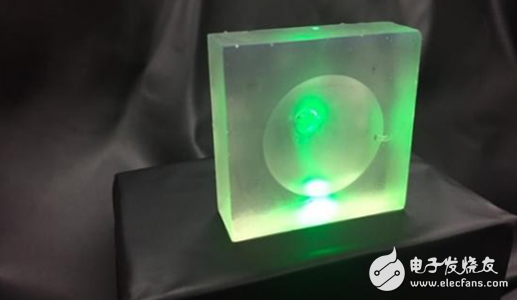Singapore Nanyang Technological University uses 3D printing technology laser-excited-controlled ultrasonic frequency converter, which is a group of mirrors that can convert laser into high-concentration ultrasonic waves, and use laser to control ultrasonic waves to achieve fine operation of cell-level microscopic objects.

3D printing + laser perfect synthesis to promote high-concentration ultrasonic frequency converter
Singapore Nanyang Technological University uses 3D printing technology laser-excited-controlled ultrasonic frequency converter, which is a group of mirrors capable of converting laser into high-concentration ultrasonic waves, using laser-controlled ultrasonic waves to achieve fine-grained operation of cell-level microscopic objects. Professor Nanda The team led by Klaus Ded Ou has developed 3D technology to develop such a frequency converter for more precise operation.
In this type of frequency converter, the laser beam is directed to a glass lens set with a carbon nanotube coated film. The heat from the laser beam can excite the coating to rapidly deform, causing precise vibration to form ultrasonic waves. However, traditionally crafted glass frames can only be customized in a limited shape, which allows the ultrasound beam to focus only on a single point - just like a magnifying glass that focuses on sunlight, so the application is very limited.
The team of Professor Ou has created a new polymer lens set using 3D printing technology, which enables the shape of the new lens group to be customized to any requirement. In this way, it is possible to cause the laser-excited ultrasonic waves to generate a plurality of focusing points at the same time, or to enable the ultrasonic waves to be generated at different fixed points at different times in sequence. This greatly increases controllability and flexibility, and is highly efficient at manipulating microscopic objects. Polymer materials are also much cheaper than glass. For example, the 2 cubic centimeter concept prototype inverter shown in the figure is only costing $2.
The research paper has been published in the recently published academic journal Applied Physics Communications, which is expected to be used in microsurgery, material analysis, and liquid fine control of microfluidic components.
Currently, most GPS antennas are right-handed polarized ceramic media consisting of ceramic antennas, low-noise signal modules, cables, and connectors. Ceramic antenna, also known as passive antenna, dielectric antenna and patch, is the core technology of GPS Antenna. The reception ability of GPS antenna depends largely on its ceramic components. Low noise signal module, also known as LNA, is the part that amplifies and filters the signal. The selection of components is also very important, otherwise it will increase the reflection loss of GPS signal, resulting in excessive noise. Cable selection should also be based on reducing reflection to ensure impedance matching and minimize signal loss. High-quality coaxial cables are typically used, as they offer superior shielding to prevent electromagnetic interference (EMI) and ensure that the signal remains strong and clear over long distances. Connectors, being the interface between the antenna and the receiver, must be chosen carefully to ensure a secure and reliable connection that does not compromise signal integrity.
Combo GPS Antenna,2 in1 GPS Antenna,3 In 1 GPS Antenna,GPS+WIFI Antenna,GPS +4G +Wifi antenna
Yetnorson Antenna Co., Ltd. , https://www.yetnorson.com
